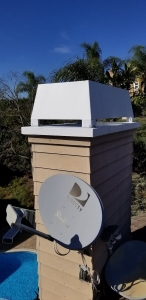 Factory built or zero clearance fireplaces have different design. This type of chimney is easily identified by having stucco or wooden sided chimneys. Further, this type of fireplace has a metal firebox with refractory panels forming the firebox with a metal flue. Almost all of these already have a chimney cap, but they are subject to deterioration from the elements and from aging. Close to beach these rust out and need to be replaced. When parts of the top up there start rusting, rainwater will start becoming an issue.
Factory built or zero clearance fireplaces have different design. This type of chimney is easily identified by having stucco or wooden sided chimneys. Further, this type of fireplace has a metal firebox with refractory panels forming the firebox with a metal flue. Almost all of these already have a chimney cap, but they are subject to deterioration from the elements and from aging. Close to beach these rust out and need to be replaced. When parts of the top up there start rusting, rainwater will start becoming an issue.
Another issue is that several of these designs provide a nesting place for birds. Occasionally, screening can be added to prevent this.
Another aspect of these types of fireplaces is that the refractory panels, which form a protective barrier between the fire and metal firebox, can develop cracks in these panels. I might mention that if these cracks are hairline, they are usually not an issue. But most manufacturers of these type fireplaces recommend replacement of panels when crack is large enough to put a coin into crack.
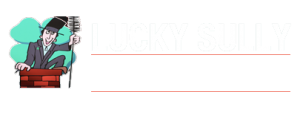
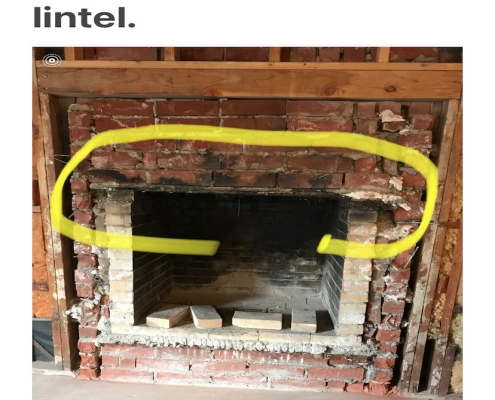
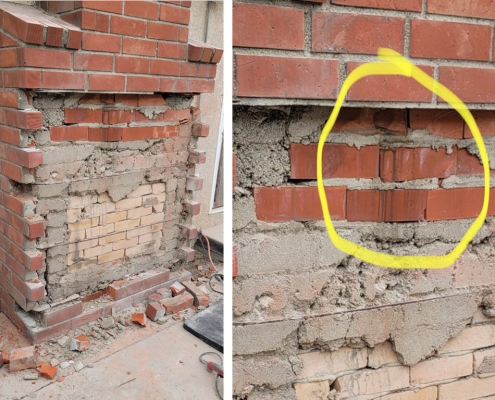
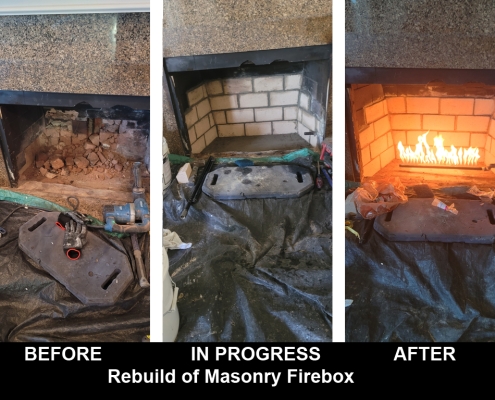
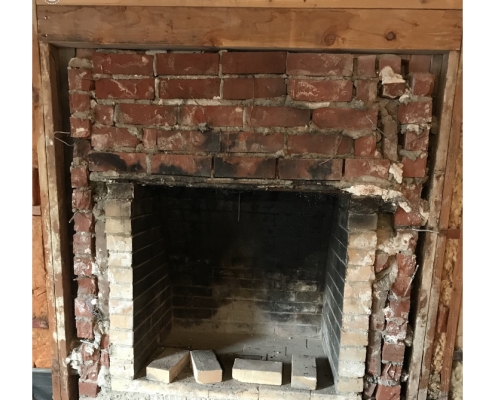

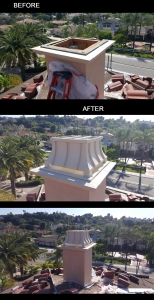
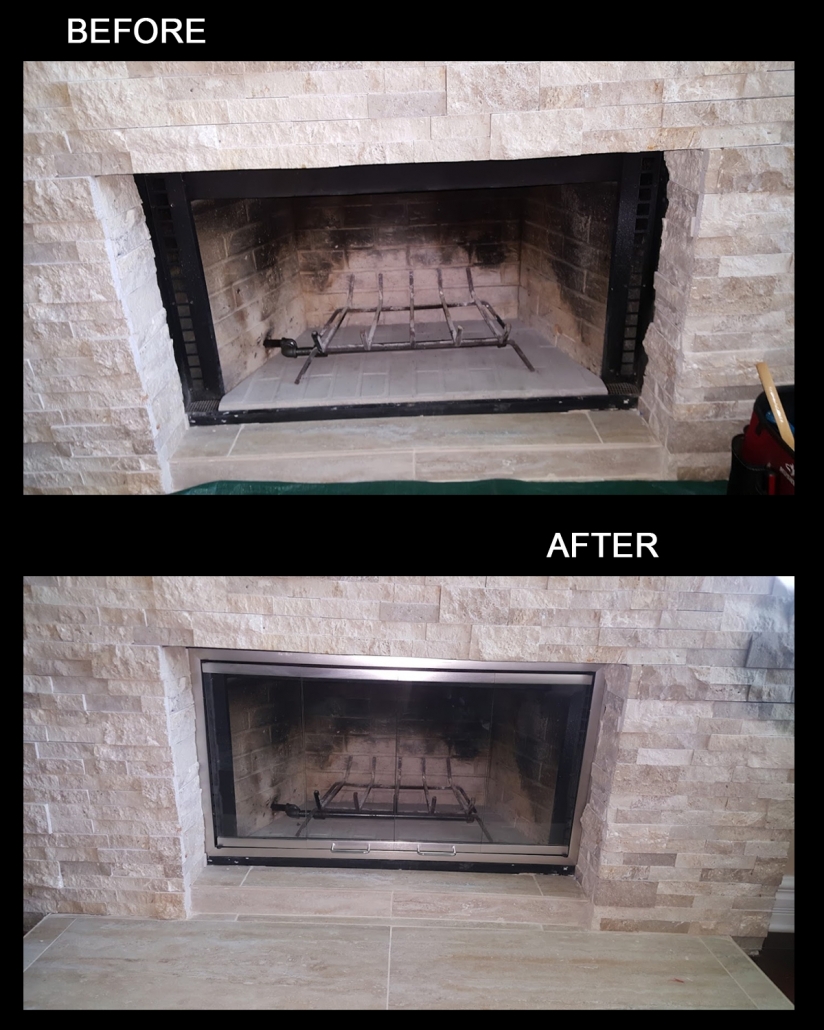
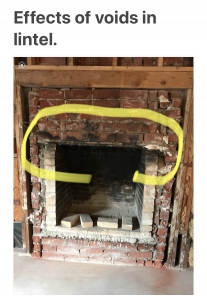 This picture shows a fireplace built probably prior to 1980 or so, where there were cracks inside the firebox top front opening. One can see staining where heat was traveling toward the wood combustibles. Someone removed the lintel and bricks of the the façade (incidentally a terrible idea as someone was looking to remodel). So, some cracks are potentially dangerous, while others not so much. But a virtual assessment can often determine the necessity for an in person inspection.
This picture shows a fireplace built probably prior to 1980 or so, where there were cracks inside the firebox top front opening. One can see staining where heat was traveling toward the wood combustibles. Someone removed the lintel and bricks of the the façade (incidentally a terrible idea as someone was looking to remodel). So, some cracks are potentially dangerous, while others not so much. But a virtual assessment can often determine the necessity for an in person inspection.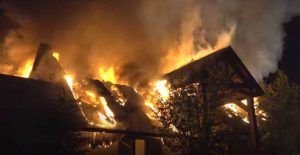 One of the major causes of home fires in the winter are fireplaces and it is reported that there are about 15,000 house fires caused by fireplaces and chimneys in the U.S. every year.
One of the major causes of home fires in the winter are fireplaces and it is reported that there are about 15,000 house fires caused by fireplaces and chimneys in the U.S. every year.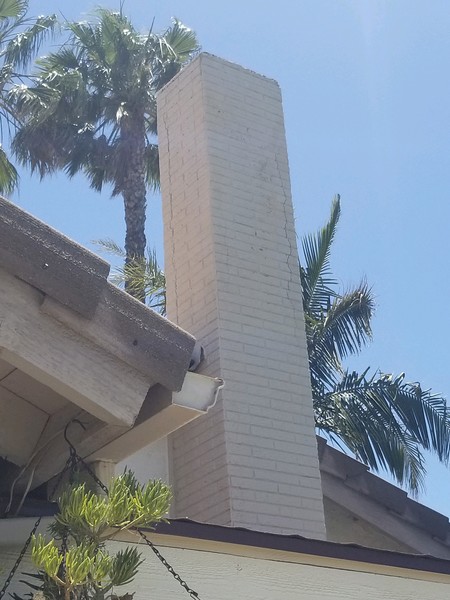 The chimneys and fireplaces were built at a factory and dropped off at the building site.
The chimneys and fireplaces were built at a factory and dropped off at the building site.




